How to eat “Mochi” (sticky rice cakes)
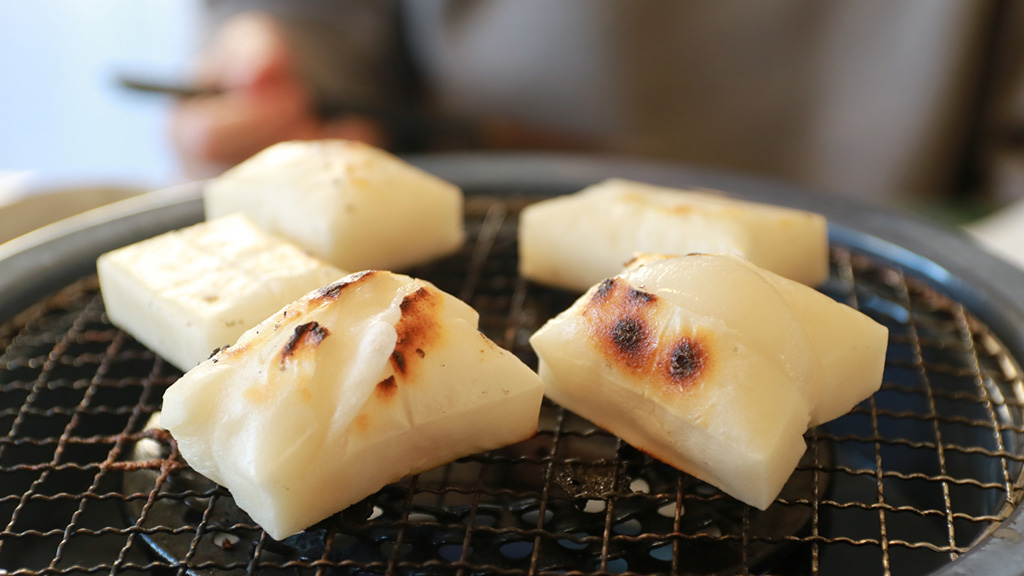
This post is also available in 日本語
From ancient times in Japan, there has been the practice of eating “Mochi” on days you want to celebrate. As “mochi” is very stretchy, becoming long, it is eaten to praying for longevity. In particular, on “O-shogatsu”, you decorate a “Kagami-mochi (one large and one small round rice cakes placed on top of each other)” where the soul of god resides with. And you add the rice cake to “Zoni” or “Shiruko”, and eat it. On this occasion, I shall introduce you to typical ways of eating “Mochi”.
Contents
Method of cooking
“Mochi” is a food made with processed “Mochi rice”. Previously, it was made in the home, but recently “Kirimochi” (Mochi cut into squares) and “Marumochii” (rounded Mochi) are available commercially, and the number of homes purchasing these has increased. The shape and flavor of the “Mochi” used differ to a surprising extent by region and home, even if the food is given the same name.
When eating the purchased “Kirimochi” and “Marumochi”, people bake, boil, fry, or steam before eating it. When baking, an oven toaster is used, and when boiling or steaming, people use a microwave oven, making it easy to cook. Make sure it does not get stuck on the net or plate.
“Zoni”
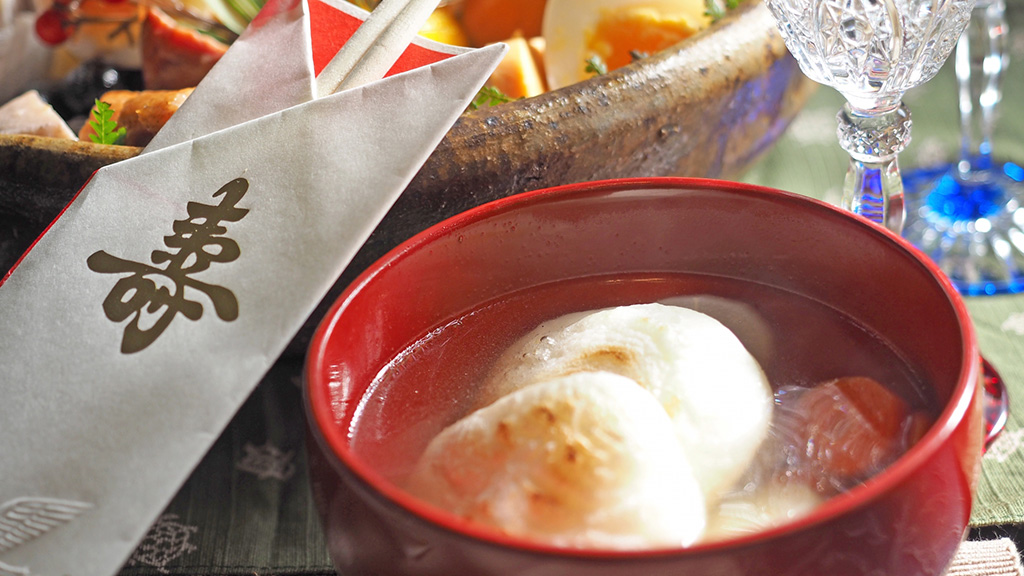
This is a food mainly eaten at “O-shogatsu” and is a soup in which you boil “Mochi” and other ingredients. People say that “if you look at ‘Zoni’, you can see where somebody is from“, and this demonstrates how much it differs by region.
- Soup is soy sauce-based or miso based
- “Mochi” used is square or round
- “Mochi” is baked or not baked before boiling
- Chicken meat is added or not
- What kind of ingredients are added with it
In some areas of the Shikoku region, rice cakes stuffed with red bean jam, and white miso soup are used in “Zoni”. We recommend visiting recipe sites and searching for and trying “Zoni” from a wide variety of regions.
“Oshiruko”, “Zenzai”
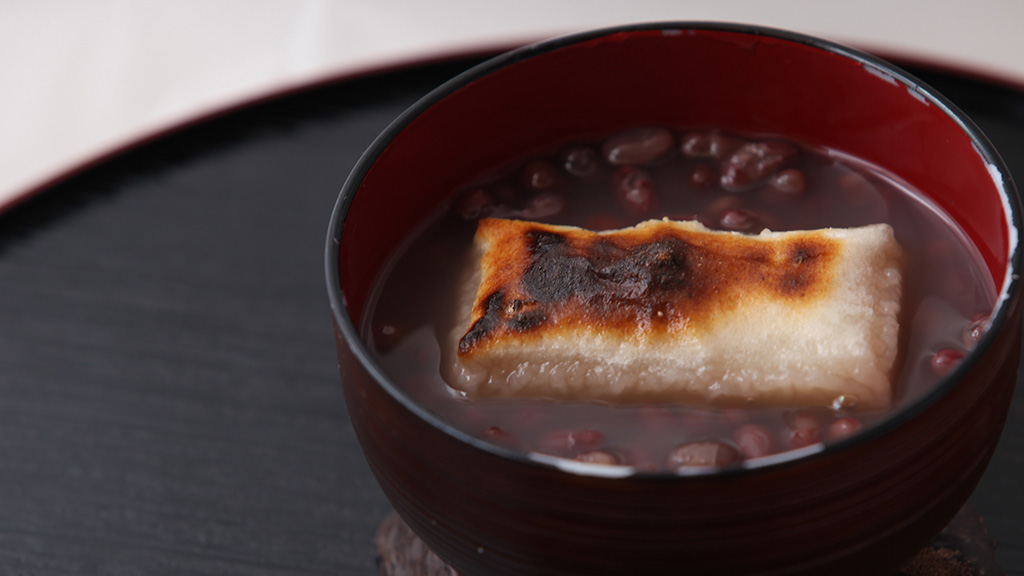
These foods are sweet adzuki bean soup with “Mochi”. The ingredients, method of cooking, and the way this is named also differ according to the region.
- Whether there is soup or not
- Whether small beans are boiled or whether it is made from “Koshian (smooth sweet bean paste)”
If you like sweet food, it is worth trying and comparing different types.
Mixing and eating
Mix and eat the “Mochi” that you bake, boil, fry, or steam, with your favorite condiments or ingredients before eating.
Soy sauce
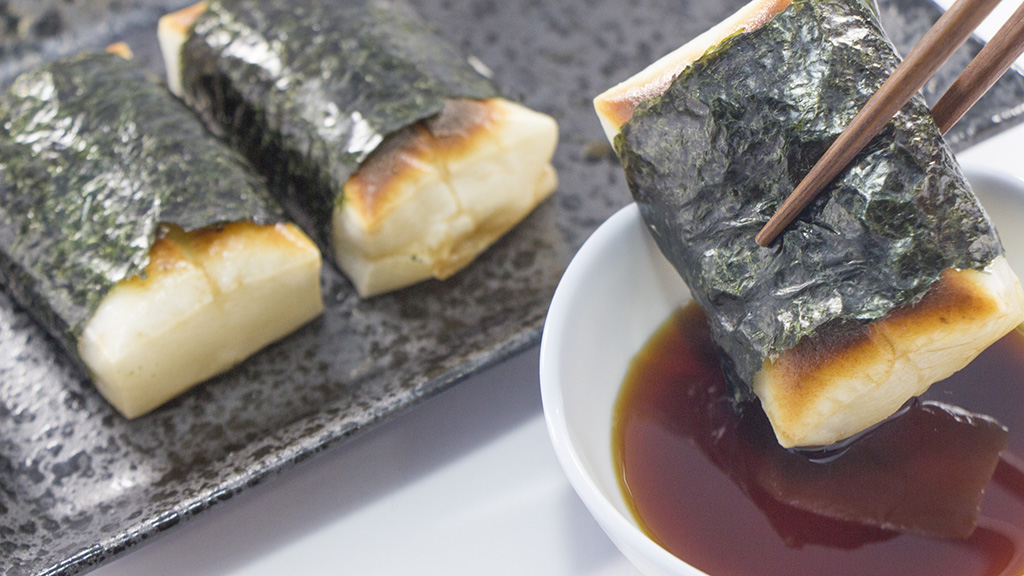
This is delicious if you add soy sauce to the “Mochi” before eating. After applying the soy sauce, “Mochi” wrapping in “Nori” (thinly spread and dried food made of seaweed) is called “Isobe-yaki”. Some people add sugar to the soy sauce before dipping the “Mochi” in it. You can also apply soy sauce to the surface of the “Mochi” and bake it before eating it.
“Kinako”
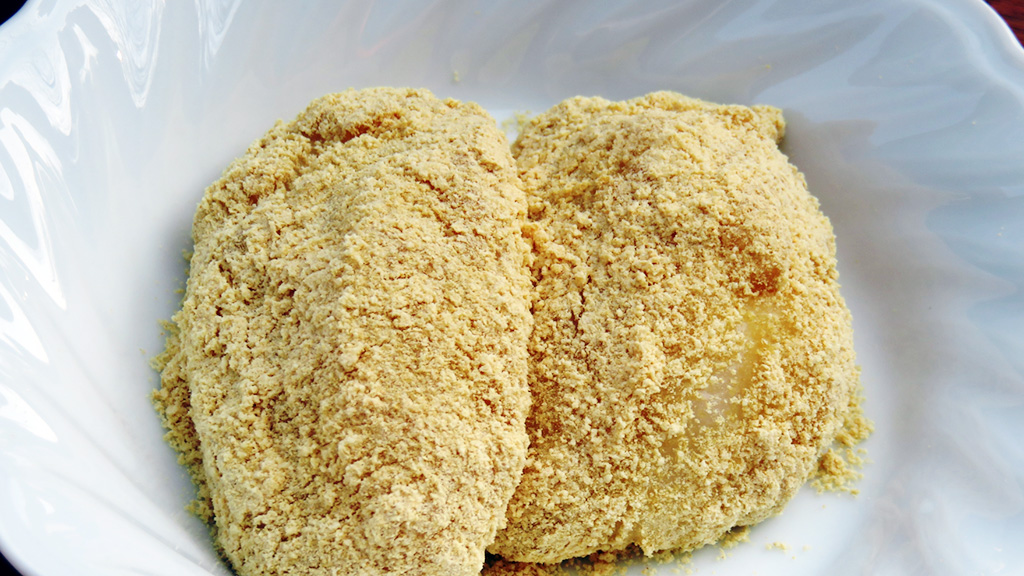
This is also delicious if you sprinkle a mixture of “Kinako” and sugar on the “Mochi” before eating. It has a delicate roasting aroma, and a gentle sweetness. “Kinako” is a traditional ingredient in which roasted soybeans are ground into powder. It has gained attention again recently for its health and beauty benefits. You can also coated by mixtures of ground walnuts or sesame, with added sugar.
“Anko”
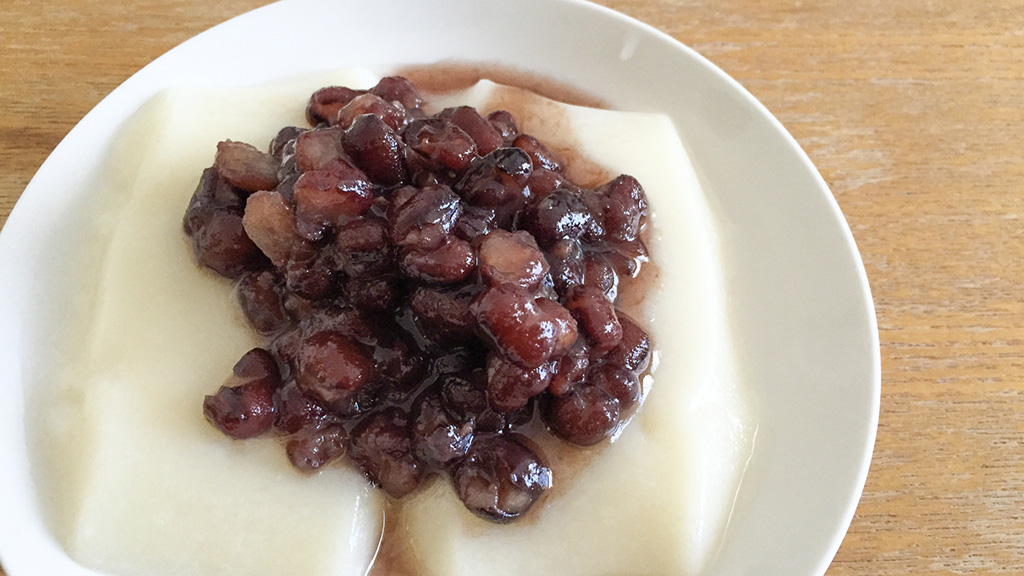
This is also delicious if you cover “Tsubuan” or “Koshian” on the “Mochi” before eating. “Anko” is a food where adzuki beans are boiled with sugar. Those that retain the form of the adzuki beans are known as “Tsubuan”, and those filtered with a cloth and their skins removed are called “Koshian”. Rather than only adzuki beans it is also popular to cover “Uguisu bean paste” made from green peas, or “Zunda bean paste” made from “Edamame (green soybeans)” on the “Mochi” before eating.
“Daikon-oroshi”
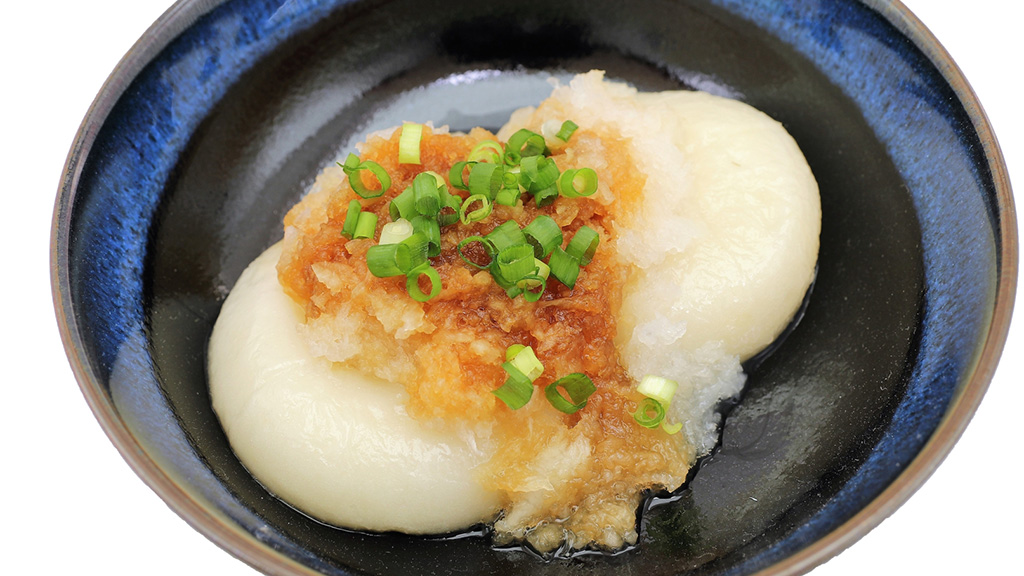
This is also delicious if you cover “Daikon-oroshi” to “Mochi” before eating. “Daikon-oroshi” is made by grating radish. This is also called “Karamimochi” or “Oroshimochi”. People sometimes mix soy sauce, ponzu sauce, miso, “Shichimi Togarashi (the mixed spice consists of red chili pepper and six other ingredients)”, katsuobushi (bonito flakes), natto, or tuna with the grated radish.
Dairy products
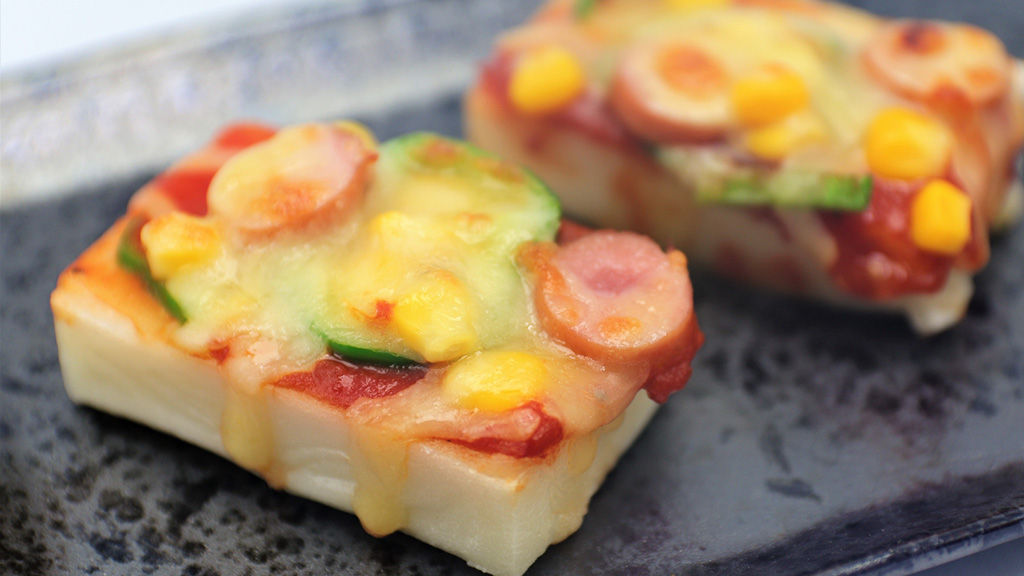
There are so many choices for the condiments and ingredients to mix with “Mochi”. It goes also well with dairy products, so some people prefer to eat with mayonnaise, add cheese and bake it like a pizza, or soften and mix with butter.
Including it when cooking
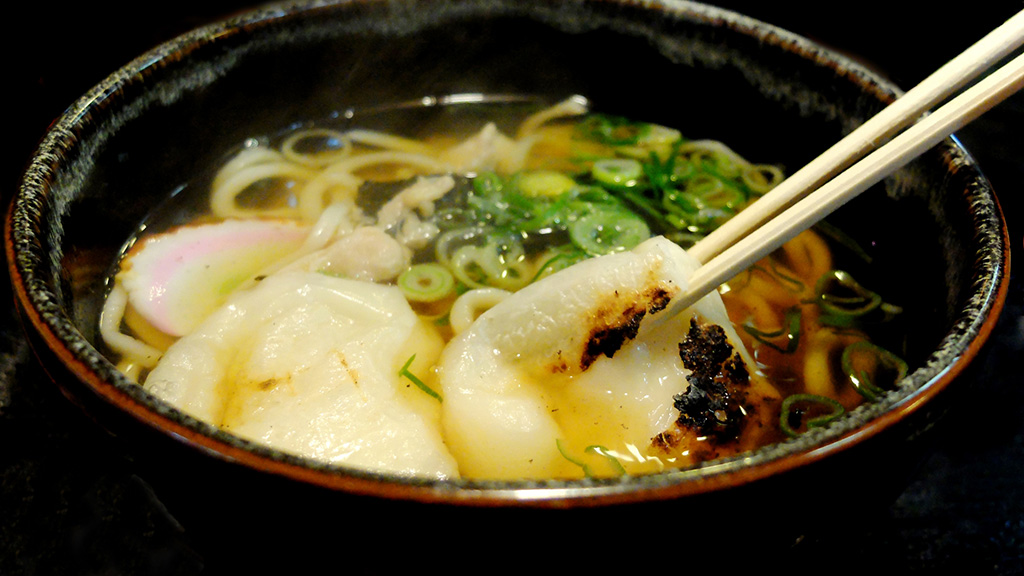
You can make a wide combination of dishes by putting the baked “Mochi” on “Udon” noodles, mixing the chopped “Mochi” with “O-konomiyaki”, pouring a starchy sauce over the fried “Mochi” and so on. When heated, it becomes soft, so in cases where you do not want it to stick to other ingredients, it is better to bake or fry it in advance.
- If You Wonder What Should Give a Gift, This Is the Best Choice! Cool Packaged Handkerchiefs!
- Apply on UV Cream Without Getting Your Hands Dirty! Why not Have This Handy Puff?
- So Popular Character “Chiikawa” Cheers You Up! Improve Your Arched Back!
- If You Want to Improve Your Sleep Quality, You Should Change Your Pajamas! 3 Recommended Pajamas
- Conveniently 2-Way! This Product Is Useful in Both Summer and Winter.









